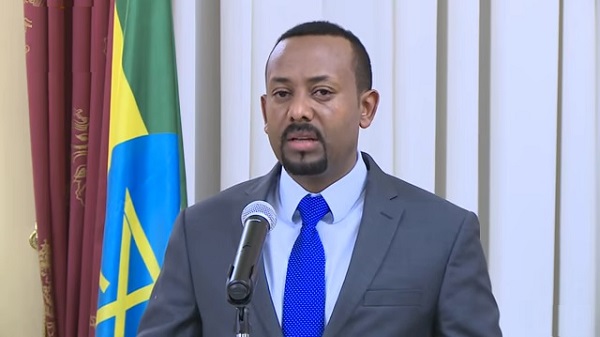This is short English summery of Wazema Radio 20 pages assessment report on Ethiopian economy.

[Wazema Radio] – With his election as the chairperson of the ruling EPRDF, Abiy Ahmed (PhD) instantly become the Prime Minister of Ethiopia. He came to the throne as three years of wide spread public protest, accompanied by two State of Emergency Declarations, pushed the ruling elite to look inward and undertake adjustment. One among the many promises of reform that Abiy made in his election was reforming the economy in a way that could create jobs for the youth, ensure macro stability, reform State-Owned Enterprises (SoEs), bring the private sector to the fore and open key sectors of the economy for private investment. And at the core of these promises lay the objectives of resolving the imbalances of the economy, increasing the inclusiveness of the economy and maintaining the growth momentum of the past 16 years.
In light of this, Abiy’s administration has spent the last year grappling with an economy that hosts serious structural as well as transitory challenges. In terms of actions, the administration has brought peace with Eritrea, opened the logistic sector for foreign investment, approved a Public Private Partnership (PPP) law, issued a law that reforms the telecom sector, embarked on massive Doing Business reform and has given Ethiopians living abroad a chance to engage in various investments previously out of their reach.
If one is to scrutinize Abiy’s first year in office, in light of structural and transient economic affairs, it could be concluded that the year was one with more talks, but less did. Abiy’s promises of restrained fiscal policy, for instance, has not materialized. What has been visible over the past year was that recurrent expenditure of the state has been increasing, new (formally unappraised) projects are coming to the scene, multiple events and ceremonies are being held and massive renovation of public offices (including the PMO) is going on. As such, it is puzzling where the budgetary restraint is going to come.
Although monetary stability is one of the areas of promise of Abiy, it failed to achieve it in the last year, with the gap between the formal and parallel markets staying around 13 Br and inflation standing at 18%. The administrative measure taken by law enforcement on parallel market has pushed it to evolve to a decentralized function.
Ethiopia’s debt distress remains in the moderately high regime. Although Abiy’s administration managed to reschedule some outstanding debt payments, it did not bring fundamental change in the debt management framework. Total debt stock remains increasing, although new additions are largely concessional. In this regard, the strain in the relationship with China is putting huge pressure on the administration.
With export remaining static, at around 2.8 billion dollars, and import continuing to increase, debt repayment has become a huge challenge for the administration. Nothing new has come in changing the performance of exports.
A major challenge for the administration, however, comes from massive youth unemployment. As such, the administration, except institutionalizing the problem under a newly formed Job Creation Commission, is yet to introduce a new jobs pack with defined focus areas, operational mechanisms, business development support and financing backup. The trend is that of using the old, but largely inefficiency and confused, systems of organizing SMEs. Although the state still funds the Revolving Youth Fund, a dedicated financing window, the effectiveness of the fund is hugely challenged by poor administration, lack of business development support, inflexibility in list of businesses financed, mismatch between financing demand and supply, lag between approval and disbursement, and many more. Weak and infant private sector means that the job creation impact of the sector remains low.
In terms of industrialization, too, the approach has been to attract as much FDI as possible. But many of the Industrial Parks, developed by use of financing obtained through Ethiopia’s debut Euro Bond, are still looking for investors. Total annual export of the Parks stays at 110 million dollars, way lower than the 2 billon dollar target. Although it is decided that the Parks will be privatized, the process and whether it is feasible is not yet clear.
The financial sector also remains under distress. The way forward for Development Bank of Ethiopia (DBE) is not clear, with its NPL standing at 33%. CBE also hosts huge state related liability, although its credit portfolio is not public. The private banks are well capitalized for the current market, but this does not mean that they can withstand competitive pressure from outside, if the sector is liberalized. As such, the guidance from the central bank in terms of creating competitive banks was no different than before.
In line with this, it is recommended that:
- The government ought to indicate clear policy lines to address structural challenges (such as lower productivity, static export, unemployment, low industrial growth, high trade deficit, expanding current account deficit, inflation, exchange rate depreciation….).
- Support to private sector ought to be aligned with the national job creation agenda.
- Suspicion between the federal and regional governments ought to be resolved as this hampers effective economic policy implementation.
- Expenditure saving fiscal policy ought to be the day-to-day norm in the state.
- Supply chains of basic consumables ought to be returned back to the private sector.
- Debt management policy ought to be reviewed
- Monetary policy ought to be disentangled from fiscal policy and it needed to get away from its long overdue deficit financing orientation.
- Job creation schemes ought to be integrated and so should the financing of SMEs.
- Relation with neighbors, particularly with Eritrea, ought to be based on principles and ought to be arranged in a way that avoids economic meddling.
- Overall market reform should precede privatization.
Wazema Radio, 2019
You can access full Amharic version report herehttp://bit.ly/2kNe2tb